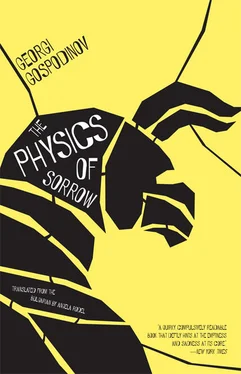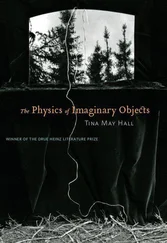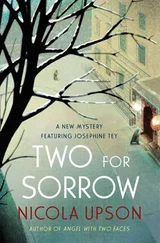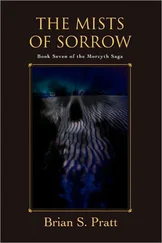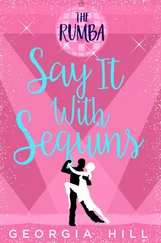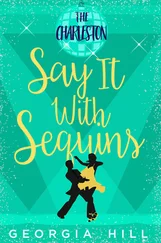In recent days the newspapers have reported that they’ve found the diaries of Dr. Mengele, who lived to a ripe old age in Latin America. Written between 1960 and 1975 in ordinary spiral-bound notebooks. Full of notes about the weather, short poems and philosophical musings, biographical details. An alibi for life itself, with all of its innocent details.
JANUARY 1
I’m not a hermit, I have a television downstairs (I only watch the evening news), I subscribe to thirty-odd newspapers and magazines, so I’m certainly no hermit. I still need to follow the world closely, I’m gathering signs.
I read Aristotle’s Poetics and listen to some surviving vinyl record. It’s January 1 of the final year, according to some calendar. It’s too quiet, even for the afternoon of such a day. There aren’t the usual calls, texted greetings. I turn off my phone, to have an alibi for that silence.
In the newspapers I processed a while back, it said that “unfriend” was the word of the year for 2009. It feels like that’s all I’ve been doing these past ten years. Over time, friends have been disappearing in different ways. Some suddenly, as if they had never existed. Others gradually, awkwardly, apologetically. They stop calling. At first you don’t get it. Then you start checking to see whether your phone battery has died. A sharp absence at five in the afternoon. At first it lasts around an hour, then it gets shorter. But it never disappears. Just like with the cigarettes you quit smoking years ago, but which you keep dreaming about.
In the dying light of the day I once again feel that inrush of obscure sorrow and fear, true savage fear, for which I have no name. I quickly put on my coat, pull on a hat with ear flaps, I could easily pass as either hip or homeless, that suits me fine, I’m invisible in any case.
If anyone wants to see what his neighborhood will look like after the end of the world, he should go outside on the afternoon of January 1. Indescribable silence. All available reserves of joy have been spent the previous evening. Dry and cold, the rock bottom has been laid bare. Metaphysical rock bottom. I’ve always wondered what is actually being celebrated — the end of one year or the beginning of another. Most likely the end. If we were celebrating the beginning, then January 1 would be the happiest day.
I stroll through the narrow, icy pathways between the apartment buildings, some empty wine bottle rolls from beneath my feet, along with the remains of explosive devices of every caliber. And not a soul outside. This is starting to look suspicious. As if someone, under the cover of New Year’s fireworks, managed to blow everyone away. They detonated that neutron bomb. I’m the only survivor, behind the thick walls of my hiding place. I can’t imagine there was anyone else cautious enough to have spent New Year’s Eve in a bomb shelter. I wonder what’s on CNN after the end of the world? I turn around to go check, and from the nothingness, two dogs and a bum jump out in front of me. The first living creatures. this year. I’m overjoyed to see them. Actually, this is their day, their New Year’s is a day later. When the previous night’s leftovers are thrown away and the dumpsters are overflowing like sad post-holiday malls.
TO BE OPENED AFTER.
An alarm clock, safety pin, toothbrush, doll, matchbox car, ladies’ hat, make-up kit, electric razor, cigarette case, pack of cigarettes, pipe, various scraps of cloth and fabric, one dollar in change, seeds for corn, tobacco, rice, beans, carrots.
What could hold a collection of such uncollectable things?
A suitcase, most likely. But who could be the owner of such a suitcase? The ladies’ hat suggests a woman, the pipe and the electric razor a gentleman, even though that’s no longer certain. Or the suitcase belongs to a little girl because of the doll, or perhaps a little boy because of the cars and all the odds and ends little boys tend to collect.
The list continues.
Novels, articles from Encyclopaedia Britannica , pictures by Picasso and Otto Dix, Time, Vogue, Saturday Evening Post, Women’s Home Companion , and other magazines and newspapers from the late summer of 1938. All of that on microfiche. The Bible in hardcopy. Short letters from Albert Einstein and Thomas Mann. The “Our Father” in 300 languages (!) and two standard English dictionaries.
A museum’s repository? A writer’s den?
To be continued.
A fifteen-minute film reel containing: a sound film with a speech by Roosevelt apropos of the season (the year is still 1938); a panoramic flight over New York; the hero of the most recent Olympic games, Jesse Owens; the May Day parade on Red Square in Moscow; shots from the undeclared war between Japan and China; a fashion show in Miami, Florida, from April; two girls in full-length bathing costumes, gentlemen in afternoon attire. And a diagram showing the location of the capsule, with the precise latitude and longitude with respect to the equator and Greenwich.
A time capsule, yes. With the world’s whole worrisome-cheerful schizophrenia, caught at a specific moment — on the eve of war, to boot.
That whole world was buried fifty feet underground on September 23, 1938, in perhaps the most famous capsule, designed by the engineers at Westinghouse Electric & Manufacturing Company for the World’s Fair in New York. To be opened after 5,000 years. But exactly one year later, that world would be buried again (literally). This time without a ritual, without a capsule, and without a diagram showing the location.
At first, the engineers officially dubbed it the “Time Bomb,” and it really did look like a bomb or a shell, with its elongated 228-centimeter body and rounded tip. Then they decided that was bad luck, so they changed the name, at least officially, but the fuse had already been set off.
In 1945 they wanted to open the capsule. Out of nostalgia for the lost, pre-war world? No. They wanted to add the most magnificent invention: a diagram of the atomic bomb. Then they decided against it. But twenty years later they couldn’t help themselves and buried a second capsule in the same place, where, alongside information about the atom bomb and several newer weapons, they added a Beatles record, birth control pills, and a credit card.

(Time bomb, 1938)
VOYAGER
The attempts to preserve time continue. The year is 1977. With the Voyager space shuttle, the strategy changes — the capsule can be buried in outer space. Until now, the direction had been down deep in the ground, now it’s up deep in the sky. As far away as possible from earth, that dangerous place.
The golden plate contains a photograph of a five-centimeter-long fetus, a nursing mother, an astronaut in outer space (very similar to the fetus), a house, a supermarket, silhouettes of a man and a woman (the woman is pregnant and the baby is visible). But the best part are the sounds — the sound of rain, wind, a chimpanzee, a kiss, frogs, a crying baby being soothed, a tractor, a galloping horse, conversation around a campfire.
The shuttle is American, it was launched in the heat of the Cold War (such linguistic irony). We knew about Voyager only because there, on the golden plate, was a Bulgarian folk song. However, it also contained a greeting from the American president (we didn’t know about that), that very same toothy Jimmy Carter, whom one neighbor woman of ours wanted to hack to bits with a cleaver like a chicken. So, in any case, now Jimmy Carter and that Bulgarian folk song were wandering amid the stars together. We were proud that our song of all things had been chosen. We later found out that it wasn’t alone in the cosmos, but cheek-by-jowl with Azerbaijani bagpipes and a Georgian choir from the USSR, Aboriginal songs, Senegalese drums, Mozart, Bach, Beethoven. And we were slightly disappointed by this. Who knows why, but we imagined that all the aliens, when they stepped out in the evening onto their chilly celestial porches, liked best of all to play that Bulgarian folk song about a fierce rebel on their record players. (Small nations love being fierce.) I didn’t understand any of the heavily dialectal lyrics of that song and was seriously worried about how the aliens would be able to understand it.
Читать дальше
